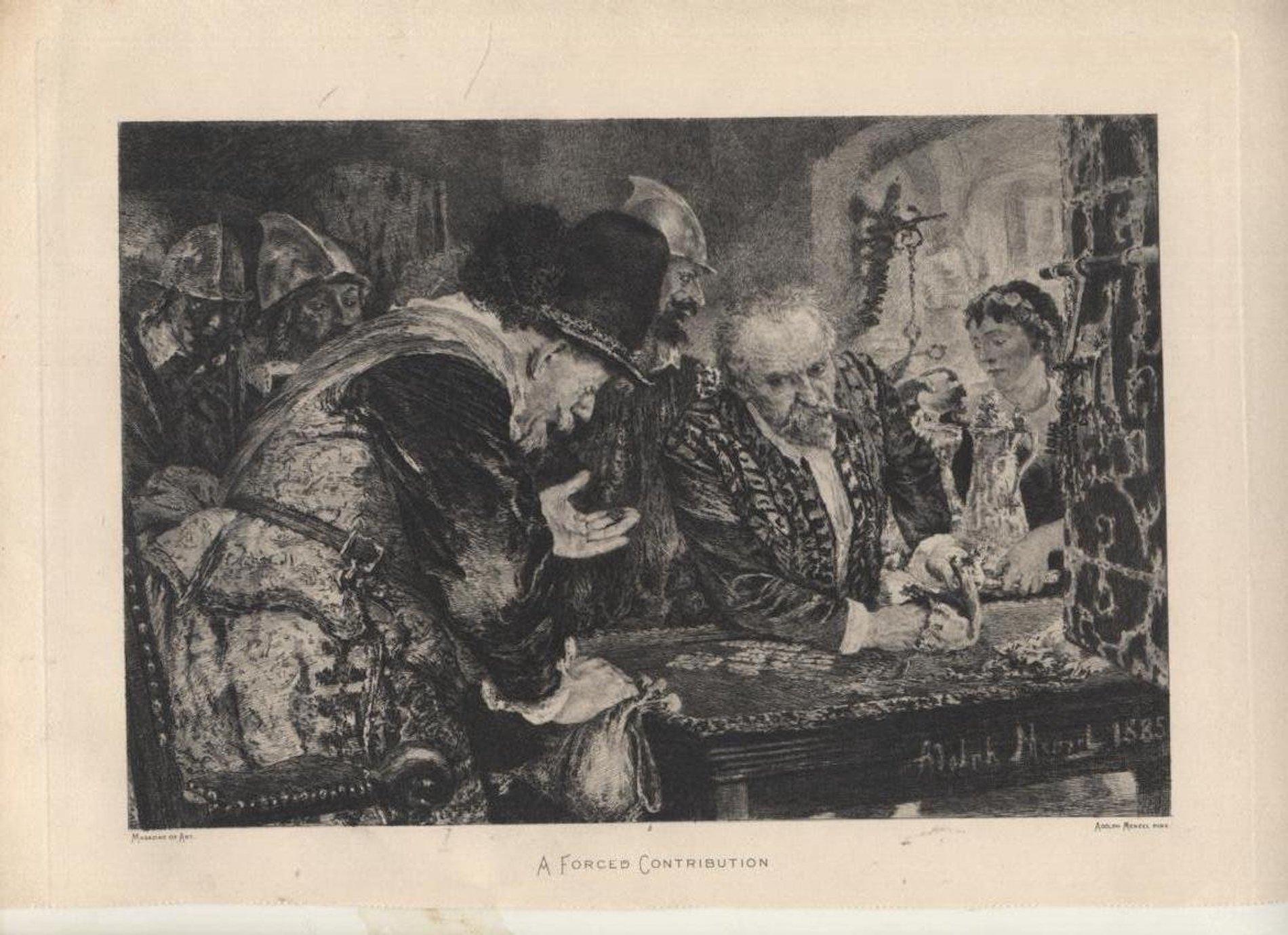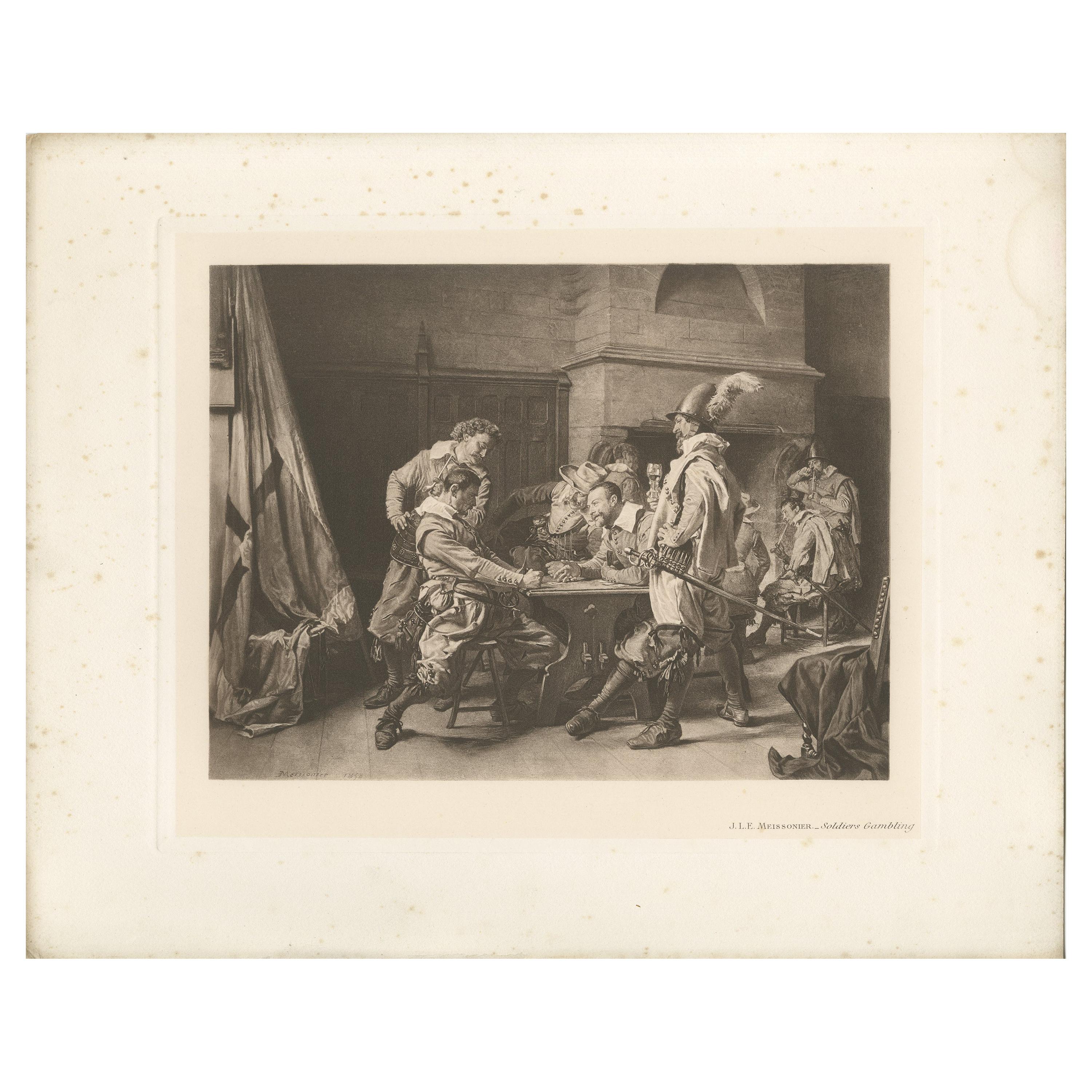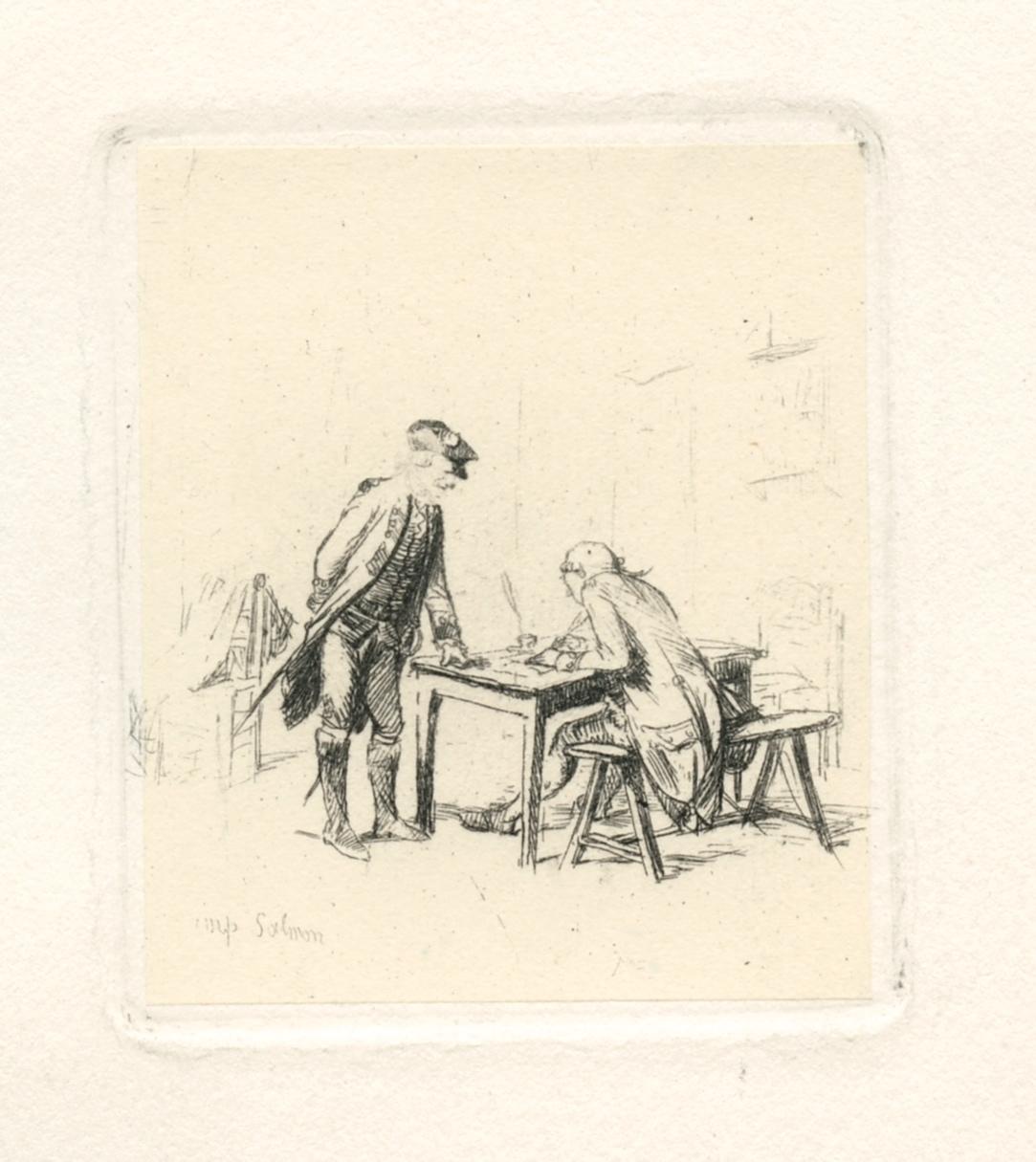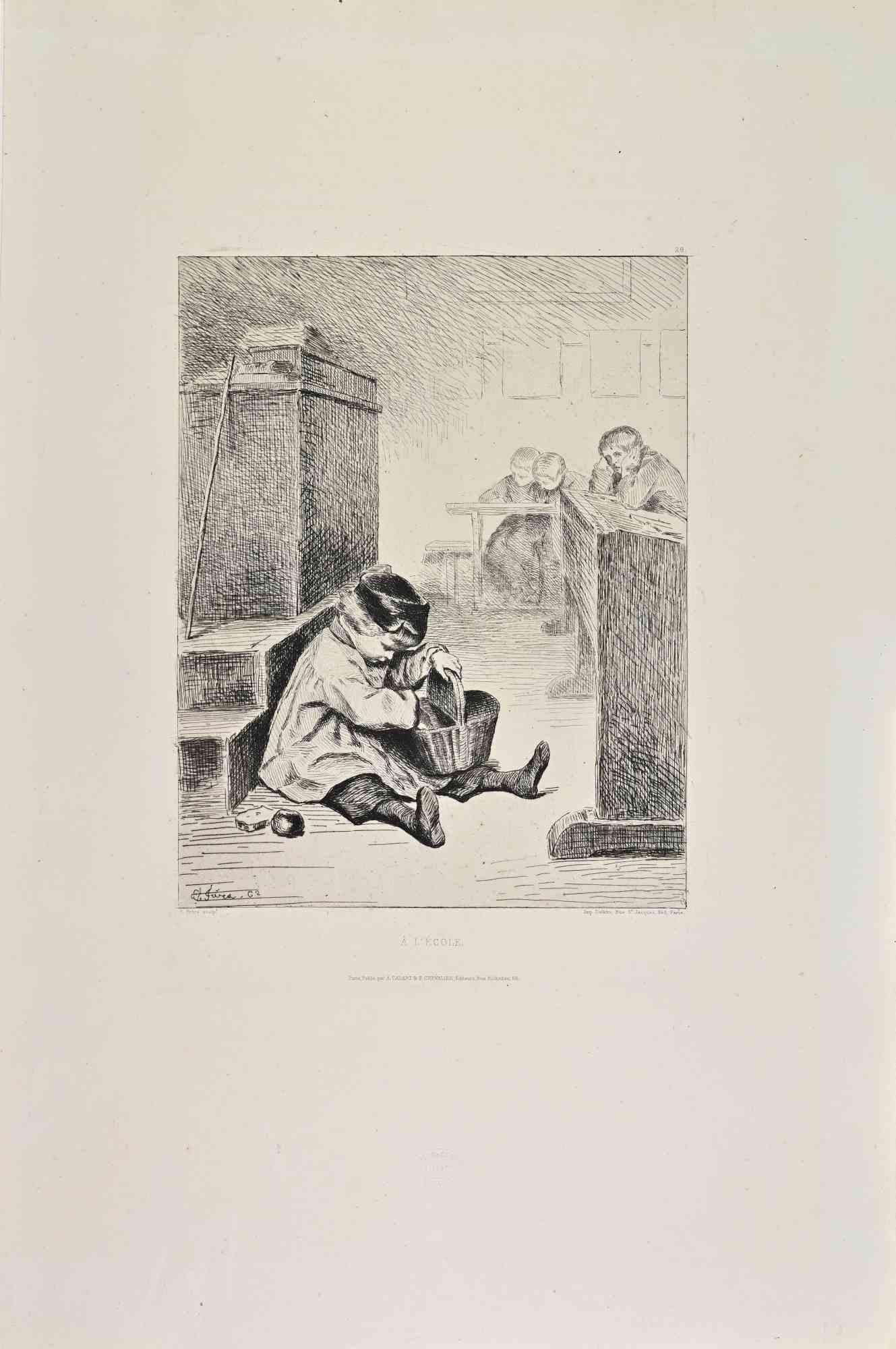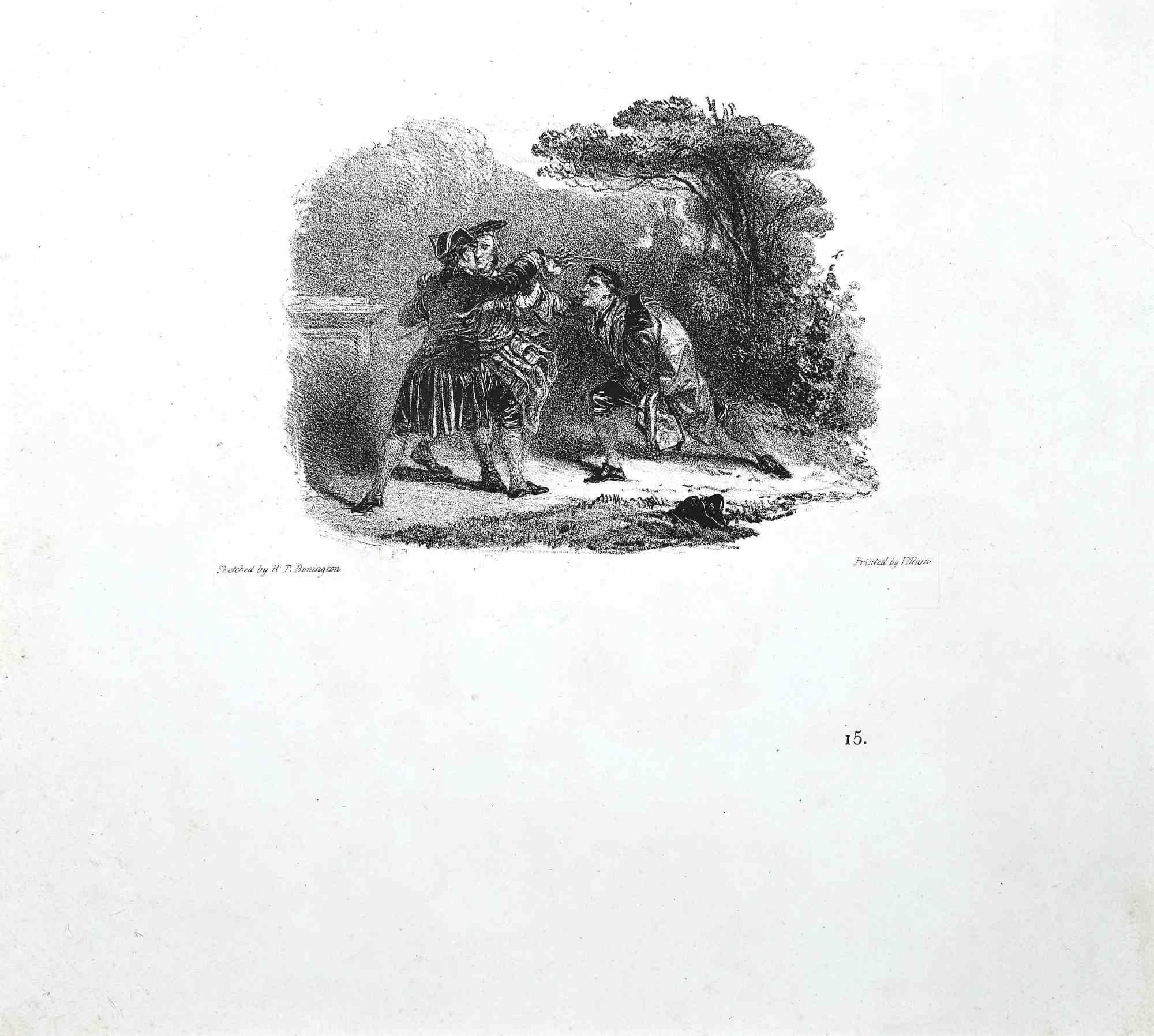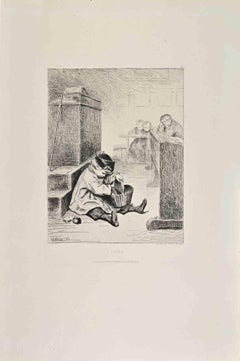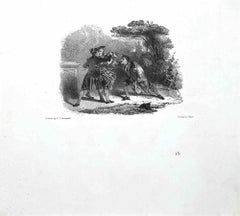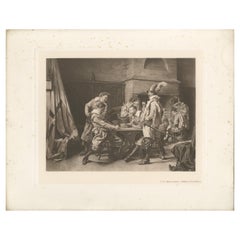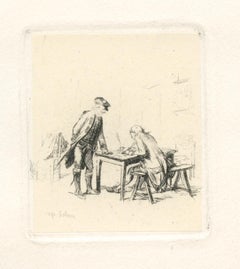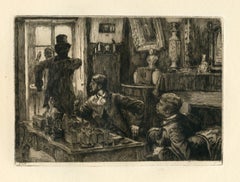Items Similar to La Contribution Forcèe (A Forced Contribution) - by Adolph Menzel - 1885
Want more images or videos?
Request additional images or videos from the seller
1 of 2
Adolph von MenzelLa Contribution Forcèe (A Forced Contribution) - by Adolph Menzel - 18851885
1885
$531.16
£404.53
€450
CA$744.56
A$814.57
CHF 425.44
MX$9,734.34
NOK 5,345.02
SEK 5,030.51
DKK 3,427.74
About the Item
Original etching by Adolph von Menzel.
Signed and dated on plate.
Good conditions.
This artwork is shipped from Italy. Under existing legislation, any artwork in Italy created over 70 years ago by an artist who has died requires a licence for export regardless of the work’s market price. The shipping may require additional handling days to require the licence according to the final destination of the artwork.
- Creator:Adolph von Menzel (1815 - 1905)
- Creation Year:1885
- Dimensions:Height: 9.45 in (24 cm)Width: 12.6 in (32 cm)Depth: 0.04 in (1 mm)
- Medium:
- Period:
- Condition:Insurance may be requested by customers as additional service, contact us for more information.
- Gallery Location:Roma, IT
- Reference Number:Seller: M-945871stDibs: LU65034338502
About the Seller
4.9
Platinum Seller
Premium sellers with a 4.7+ rating and 24-hour response times
1stDibs seller since 2017
7,795 sales on 1stDibs
Typical response time: 1 hour
- ShippingRetrieving quote...Shipping from: Roma, Italy
- Return Policy
Authenticity Guarantee
In the unlikely event there’s an issue with an item’s authenticity, contact us within 1 year for a full refund. DetailsMoney-Back Guarantee
If your item is not as described, is damaged in transit, or does not arrive, contact us within 7 days for a full refund. Details24-Hour Cancellation
You have a 24-hour grace period in which to reconsider your purchase, with no questions asked.Vetted Professional Sellers
Our world-class sellers must adhere to strict standards for service and quality, maintaining the integrity of our listings.Price-Match Guarantee
If you find that a seller listed the same item for a lower price elsewhere, we’ll match it.Trusted Global Delivery
Our best-in-class carrier network provides specialized shipping options worldwide, including custom delivery.More From This Seller
View AllA Forced Contribution - Etching by A. Menzel - 1885 ca.
By Adolph von Menzel
Located in Roma, IT
A forced contribution is an original etching realized by the german painter and engraver Adolph von Menzel in 1885 ca. Very good conditions.
Von Menzel is considered one of the most...
Category
1880s Modern Figurative Prints
Materials
Etching
$495 Sale Price
30% Off
Le Message - Original Etching by H.-C. Toussaint after E. Isabey - 1880
By Henri-Charles Toussaint
Located in Roma, IT
Le Message 1880s is an original print in etching technique, realized after Eugène Isabey (Painter and Engraver French ; 1803-1886) by Charles Henri Toussai...
Category
1880s Figurative Prints
Materials
Etching
A L'Ecole - Etching by Pierre-Édouard Frère - Late 19th Century
Located in Roma, IT
A L'Ecole is a black and White etching realized by E. Frere in the Late 19th Century.
Titled in the lower
Image Size: 31x23
Very good impression.
Realized by Cadart for the "Soc...
Category
Late 19th Century Impressionist Figurative Prints
Materials
Etching
The Quarrel - Original Lithograph by Richard Parks Bonington - 19th Century
Located in Roma, IT
The Quarrel is original lithographon ivory-colored paper realized by Richard Parks Bonington.
Signed on the plate on the lower left.
Good co...
Category
19th Century Modern Figurative Prints
Materials
Lithograph
Un Jour de Recompense - Etching by François Chifflart - 1860s
Located in Roma, IT
Un Jour de Recompense is a black and White etching realized by François Chifflart in the 1860s.
Titled in the lower.
Image size: 24x32.
Very good impression with wide margins and...
Category
1860s Impressionist Figurative Prints
Materials
Etching
The Spectators - Original Lithograph by Paul Gavarni - 1881
By Paul Gavarni
Located in Roma, IT
The Spectators is an original lithograph artwork on ivory-colored paper, realized by the French draftsman Paul Gavarni (after) (alias Guillaume Sulpice C...
Category
1880s Modern Figurative Prints
Materials
Lithograph
$141 Sale Price
40% Off
You May Also Like
Antique Print of 'Soldiers Gambling' made after J.L.E. Meissonier (1902)
Located in Langweer, NL
Antique print titled 'Soldiers Gambling'. Original antique print on chine collé made after a painting by J.L.E. Meissonier. This print originates from volume 3 of the series 'The Wal...
Category
Early 20th Century Prints
Materials
Paper
"Le Sergent Rapporteur" original etching
By Jean-Louis-Ernest Meissonier
Located in Henderson, NV
Medium: original etching. Catalogue reference: Beraldi 14. This impression on chine colle paper was published by the Gazette des Beaux-Arts in 1903. Plate size: 2 1/2 x 2 1/8 inches ...
Category
Early 1900s Prints and Multiples
Materials
Etching
l' Emprunt Pour la Victoire
By Jean Louis Forain
Located in San Francisco, CA
Artist: Jean-Louis Forain (French, 1852-1931)
Title: l' Emprunt Pour la Victoire
Year: 1918
Medium: Lithograph
Edition: Numbered 266/300 in pencil...
Category
Early 20th Century Impressionist Figurative Prints
Materials
Lithograph
original etching
By James Jacques Joseph Tissot
Located in Henderson, NV
Medium: original etching. Executed by Tissot for the "Rene Mauperin" suite of etchings, published in Paris in 1884 by Charpentier in a limited edition of 550. This is a nice impressi...
Category
1880s Prints and Multiples
Materials
Etching
Le Sire De Lumey
By Félicien Rops
Located in Middletown, NY
Brussels: J. Bouwens, 1867. Etching with aquatint and engraving on laid Japan paper, 9 3/4 x 6 1/2 inches (247 x 163 mm), full margins. Fifth state (of 5). Scattered moderate foxing....
Category
Late 19th Century Symbolist Portrait Prints
Materials
Laid Paper, Engraving, Etching, Aquatint
Keying Up - The Court Jester
By William Merritt Chase
Located in Fairlawn, OH
Keying Up - The Court Jester
Etching with drypoint, 1879
Signed in the plate lower left corner (see photos)
Proof before engraved title and engraved names
Printed on thin light golden Japanese tissue paper
In the final state, with engraved titled and typeface engraved artist’s signature below the image
Condition: excellent
Plate size: 6-5/8 x 4-1/4"
According to Pisano, this image was very popular during Chase’s life. It is based on his famous painting, Keying Up-The Court Jester, in the collection of the Pennsylvania Academy of Fine Arts. The painting was created in Munich during the artist’s studies there. It was exhibited in the 1876 Centennial Exhibition in Philadelphia where it won a Medal of Honor and helped establish the artist’s reputation as a leading American painter.
Chase, always conscious of self promotion, created the etching and had numerous impressions printed. He sold them for a modest price to increase his fame. The etching was later published in Sylvester R. Koehler, American Art Review, September 1878. It was for this American Art Review printing that the engraved titled and type face signature below the image were added to the plate.
This example was part of a group of impressions that came down in the Chase family via his daughter Dorothy Bremond Chase, his third daughter. They were acquired at auction in a single auction lot, housed in a paper board folder. The consignor was Associated American Artist’s as they were liquidating their stock prior to closing the gallery.
Dorothy was the subject of Chase’s painting, My Little Daughter Dorothy. C. 1894, in the collection of the Detroit Institute of Arts as well as numerous other portraits of her.
Reference: Pisano/Bake, Volume 1, Pr. 3, illustrates the rare 1st state, this being a 2nd state before any other the engraved title and Chase's name in the bottom margin which are found in the third state.
Artist bio in file (Chase)
In 1883 Chase was involved in the organization of an exhibition to help raise funds for a pedestal for the Statute of Liberty. The exhibition featured loans of three works by Manet and urban scenes by the Italian Impressionist Giuseppe de Nittis. Both artists influenced Chase's Impressionistic style that gave rise to a series of New York park scenes. It is also thought that he was influenced by John Singer Sargent's In the Luxembourg Gardens (1879) which was exhibited in New York at this time. Indeed, Chase had met Sargent in Europe in 1881, the two men becoming lifelong friends with Sargent painting Chase's portrait in 1902.
On another European trip in 1885, Chase met James McNeill Whistler in London. While Whistler had a reputation for being difficult, the two artists got along famously and agreed to paint one another's portrait. Eventually, however, Whistler's moods began to grate with Chase who wrote home stating "I really begin to feel that I never will get away from here". For his part, Whistler criticized Chase's finished portrait and, according to Hirshler, "complained about Chase for the rest of his life". While no record exists of Whistler's portrait of Chase; Chase's portrait of Whistler remains a well-known piece in his oeuvre.
In 1887 Chase married Alice Gerson, the daughter of the manager of a lithography company. Though some fifteen years his junior (Chase was 37), he had known Alice for some time through her family's devotion to the arts. The pair, who would enjoy a happy marriage with Alice in full support of her husband's career, settled initially in Brooklyn where their first child was born. The couple would parent six daughters and two sons and it was only his family that could rival his devotion to his art. Indeed, Chase often combined his two loves by painting several portraits of his wife and children in Brooklyn parks before the couple relocated to Manhattan.
Later Period
Between 1891 and 1902, Chase and his family spent their summers at a purpose-built home and studio in Shinnecock Hills, a close suburb of the upmarket town of Southampton on the south shore of Long Island (roughly 100 miles east of New York). Chase set up, and taught two days a week, at the nearby Shinnecock Hills Summer School of Art which benefitted from the financial backing of local art collectors. It was at Shinnecock that Chase, taken in by the region's striking natural surroundings, painted several Impressionistic landscapes. As Bettis put it, "There, among the dunes, in the bright sunlight and sea air his painterly impulse was given free sway, and he produced some of his freest and loveliest work". His passion for the area was so felt he even gave his daughter Hazel the middle name of Neamaug, in honor of the rich Native American history of Shinnecock. Chase was equally focused on the students that came to the School and who he encouraged to paint in the modern plein air style favored by the French Impressionists.
Although Chase was making a name for himself as an Impressionist, he never abandoned his commitment to the sombre tones and academic tropes he had learned in Munich, though these he reserved for his portraits, and for his series of striking still lifes featuring dead fish. Chase was in fact a successful society portraitist - he painted fashionable women for a fee of $2,000 - and would paint his students as "samples" which he then donated to leading art institutions (such as Lady in Black (1888) which he donated to the Metropolitan Museum in 1891).
In 1896, facing financial difficulties, Chase flirted with the idea of giving up his teaching in New York and traveled with his family to Madrid where he developed a passion for bullfighting. Chase returned however to Shinnecock in June to teach his yearly summer art class, and in the fall of that year, established his own art school in Manhattan: the Chase School which was modelled on the Académie Julian in Paris. Chase lacked business savvy, however, and the Chase School lasted only two years before it was placed under new management. It continued as the New York School of Art (changed to Parsons School of Design starting 1941) with Chase as head the School for eleven more years. Chase also taught during this period at the Pennsylvania Academy of Fine Arts.
In 1902, following the premature death of his friend John Twachtman, Chase was invited to join the Ten American Painters group (who included amongst its members, Frank Weston Benson, Thomas Wilmer Dewing...
Category
1870s American Impressionist Figurative Prints
Materials
Etching
